As the center of the Golden Triangle, Jefferson County has long been a thriving part of Texas when it comes to oil, trade, and manufacturing. Boasting Beaumont, Port Nueces, and Port Arthur, Jefferson County is the main hub for much of east Texas and serves as a waypoint between Houston and Louisiana. It is also one of the most diverse counties in Texas, which is truly saying something. Thanks to a new oil boom, the economy has been improving in the area and there has been an influx of new residents. While great on the surface, the downside to this revival is increasing taxes and property values.
The Jefferson Central Appraisal District (JCAD) handed out some moderate increases in 2025, with a jump of 2.8% in residential property and a hike of 1.2% for commercial real estate. While exemptions have traditionally been the way to help lower values, property tax appeals have become more common. These challenges to taxable values have been gaining traction across Texas, including Jefferson County. Now that both formal and informal appeals have been decided, their effects on the county can be studied in-depth. In this article, we will see what appeals were able to do to bring relief.
Taxable Value of Homes Trimmed $14.5 Million Thanks to Appeals
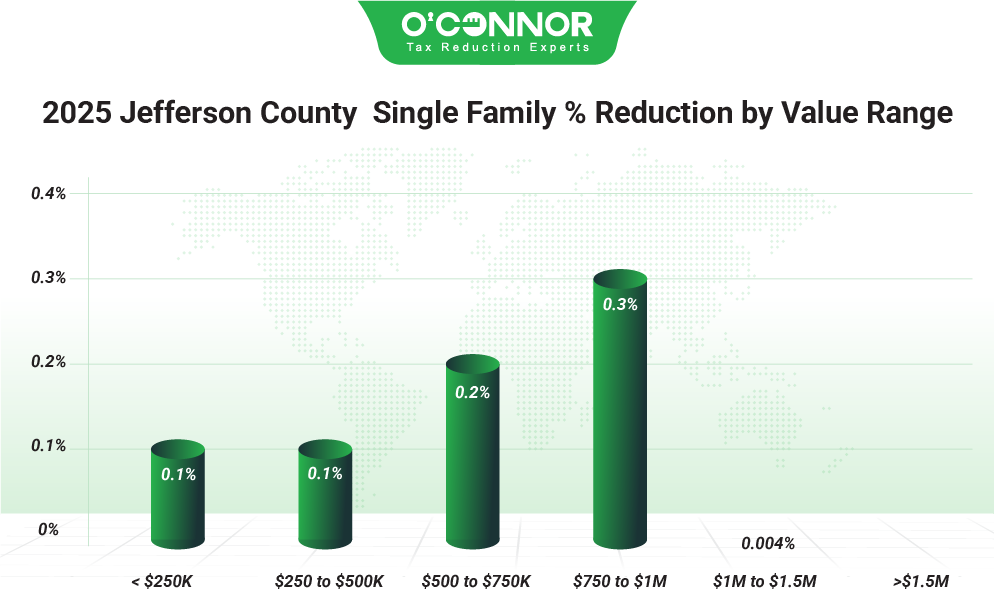
While the 2025 increases were not as dire as in some other counties, it was believed that over 35% of all homes were overvalued. This is an improvement over 2024, where it was believed 51% of homes were overvalued. Combined appeals were able to bring some relief, cutting value by 0.1%, which translated into a savings of $14.51 million. Homes worth under $250,000 were the largest source of value, totaling $8.10 billion after a protest decrease of 0.1%. Homes worth between $250,000 and $500,000 took second place with $4.95 billion with another reduction of 0.1%. Homes assessed at $750,000 to $1 million experienced the largest decrease by percentage with 0.3%, which resulted in a final tally of $157.42 million.
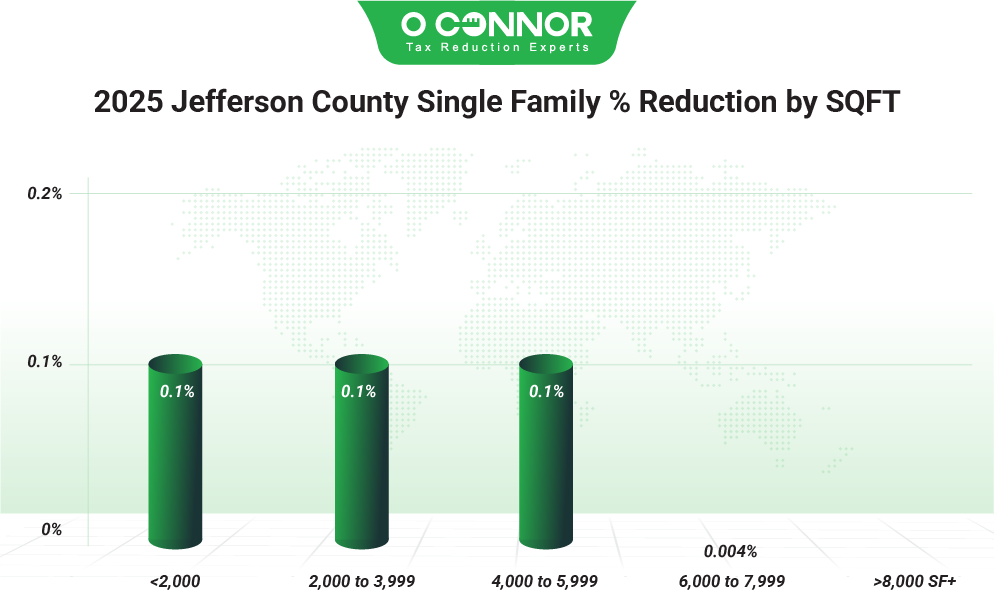
When it came to the size of homes in Jefferson County, the value was broken down almost identically. Following a drop of 0.1%, homes under 2,000 square feet fell to $8.09 billion, while homes between 2,000 and 3,999 square feet reached $5.20 billion after a cut of 0.1%. The 0.1% trend continued with homes measured between 4,000 and 5,999 square feet, which were able to total $651.87 million. Larger homes were able to land slight decreases, but not enough to really move the scales.
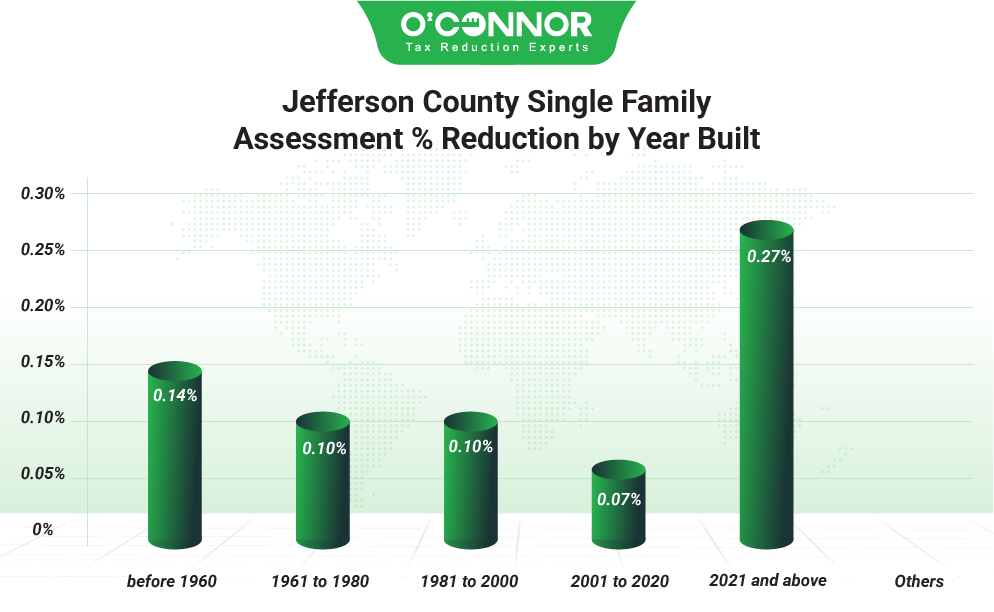
Jefferson County is unique in many ways. One thing that stands out is how much older homes tend to be in the county compared to the rest of Texas. The No. 1 construction timeframe according to value was 1961 to 1980, which totaled $7.48 billion, roughly 52.8% of all value. Those built between 2001 and 2020, the typical first place timeframe in Texas, reached $3.14 billion. Each of these eras saw a reduction of 0.1% thanks to appeals. In third place, with $2.61 billion, were homes built from 1981 to 2000, which likewise saw a decrease of 0.1%. New construction did add 21.9% to its value, jumping to $620.08 million before being cut by 0.3% to $619.02 million.
Minor Commercial Gains Offset by Appeals
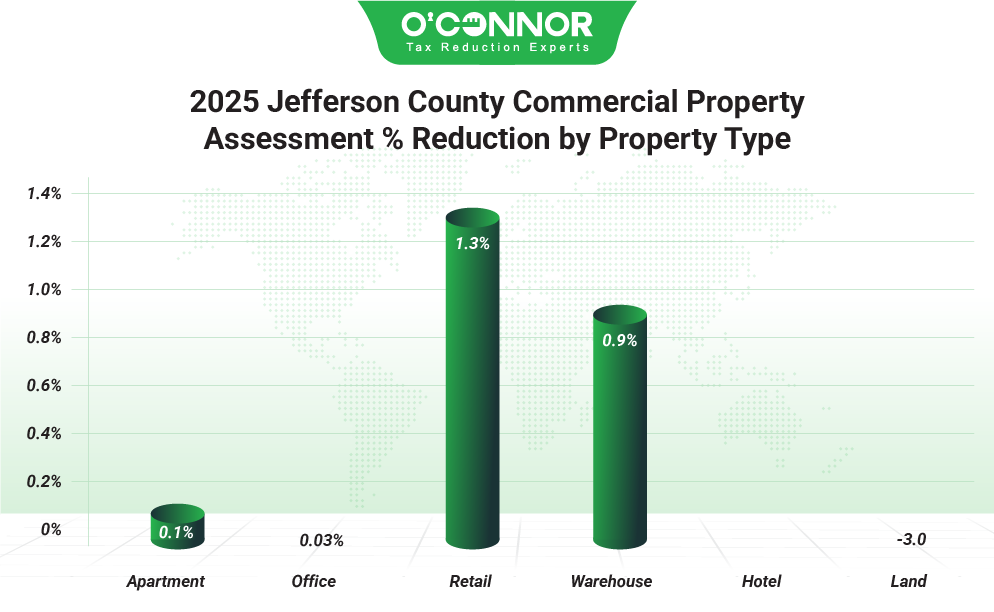
Jefferson County is also unique because commercial value supersedes homes, which is basically unheard of in Texas. And that is not even counting petrochemical, refining, and manufacturing. After a general increase of 1.2% in 2025, business real estate in the county was valued at 21.30 billion. Raw land was the most valuable by far, totaling $17.48 billion. For developed business real estate, apartments were No. 1 at $1.54 billion following a reduction of 0.1%. Offices followed with $1.03 billion, with a tiny reduction. Retail landed the largest decrease of 1.3%, falling to $633.32 million. Warehouses managed to get a reduction of 0.9%, achieving a new total of $296.82 million.
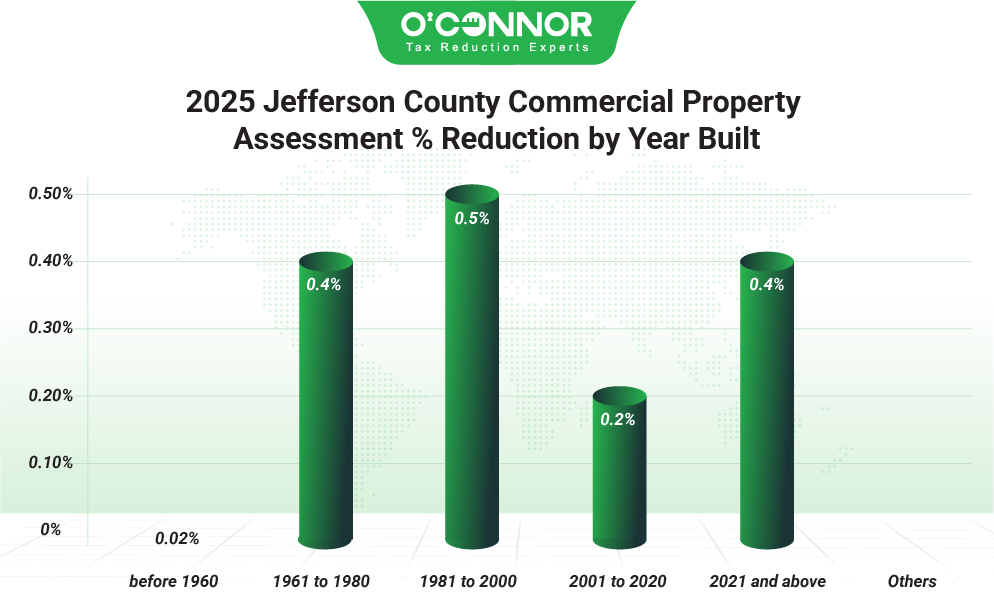
Compared to homes, businesses were much younger when it came to age of construction. The era of 2001 to 2020 produced $1.62 billion in value, following a reduction of 0.2%. 1981 to 2000 was second with $984.59 million, which was achieved after a solid cut of 0.5%. 1961 to 1980 was just behind with $954.76 million, which was preceded by a reduction of 0.4%. New construction saw a reduction of 0.4%, dropping to $195.35 million after a meteoric rise of 23.6% earlier in the year. Raw land did not see a decrease.
Appeals Slice 1.3% from Retail Spaces
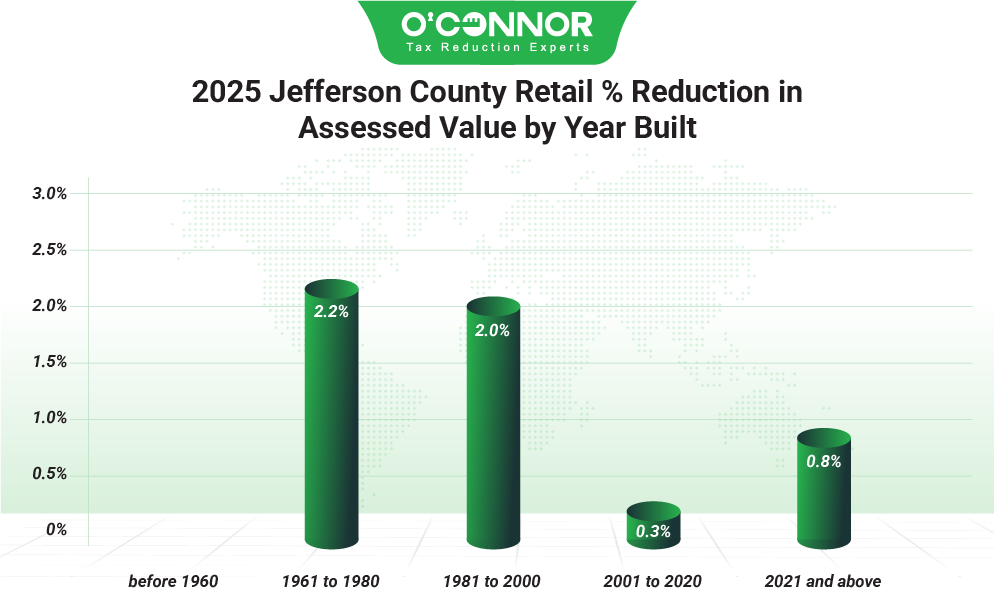
Retail spaces saw an increase of 10% in 2025, bringing the total to $641.50 million. This was later protested down 1.3% to $633.32 million. When broken down by age of construction, retail stores saw their value spread out more evenly than many other property types. Construction from 2001 to 2020 was still in the lead with $236.59 million, which was the result of a reduction of 0.3%. Construction from 1981 to 2000 was in second place with $201.66 million, following a reduction of 2%. With a cut of 2.2%, stores built between 1961 and 1980 dropped to $145.30 million. New construction saw only a protested reduction of 0.8%, reaching $23.91 million. This had previously increased by 53.4%.
Warehouses Use Protests to Battle Spike of 7%
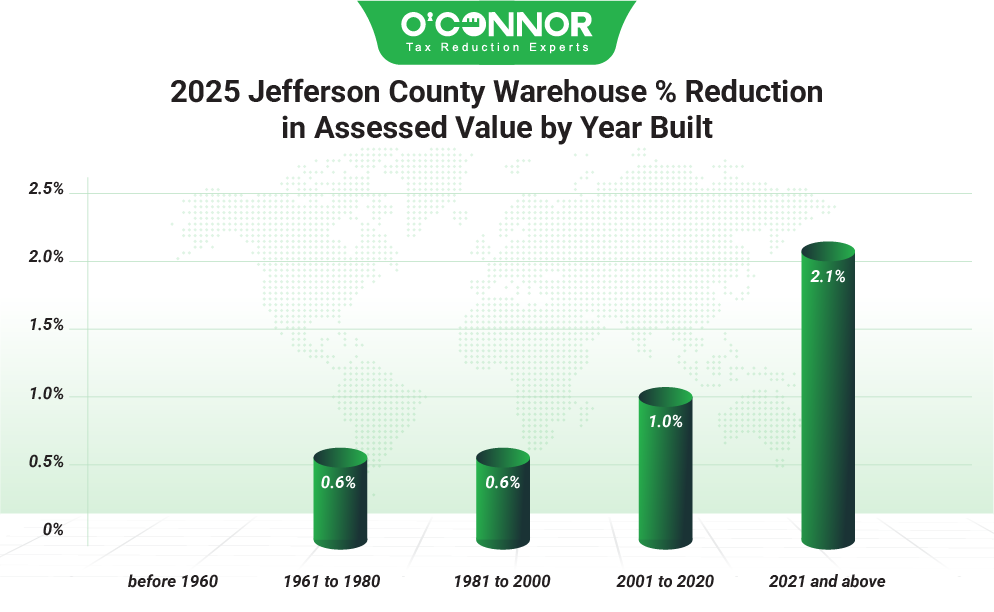
Thanks to its position as a shipping mecca, Jefferson County is packed with warehouses. These were initially increased 7% to $259.16 million, but eventually received a reduction of 0.9%, taking the total to $256.82 million. Following a drop of 1%, warehouses built from 2001 to 2020 fell to $114.88 million. This was followed by construction from 1981 to 2000, which reached $84.95 million after a cut of 0.6%. Warehouses from 1961 to 1980 nabbed a reduction of 0.6%, achieving a new tally of $35.08 million. New construction rounded out the timeframes, falling 2.1% to $21.92 million. These new warehouses had previously added 53.2% to their value.
Jefferson County Wide Open for Appeals
While neither the value rises nor decreases were particularly high in 2025, these slight changes can represent a significant chunk of money, especially for working families that are just trying to keep their property. Jefferson County and the broader Golden Triangle region are known for their strong blue-collar workforce and deep-rooted family traditions. In the past few years, these communities have been hit the hardest by rising values and taxes, as they can ill-afford to see their largest bill increase by a few percentage points. This is why property tax appeals are so vital in places like Jefferson County and why there needs to be more participation every year. Years with lower value increases are often the best time to file a protest, since you may be able to not only reduce the current year’s increase but also reverse part of the previous year’s rise.
If you are looking to protest your taxes, O’Connor is here to help. As one of the largest property tax consulting firmss in the nation, we have the resources needed to back every one of our 185,000 clients. What gives us a real advantage, however, is our local expertise. Founded in Houston, we have tons of experience fighting every type of Texas appraisal district there is and have been doing so for over 50 years. JCAD is no exception, and we have spent a lot of time and energy in the Golden Triangle area fighting for the rights of taxpayers across the board. In 2025, we were able to save our Jefferson County clients $4.05 million in taxable value, a figure we are looking to best in 2026. There is no risk in challenging your taxes, as they can never be raised for a protest. There is also never an upfront fee or hidden charge to join O’Connor. You are only charged if we can lower your taxes. To sweeten the deal, we will also protest your property automatically every year, ensuring that you are always paying only your fair share.

